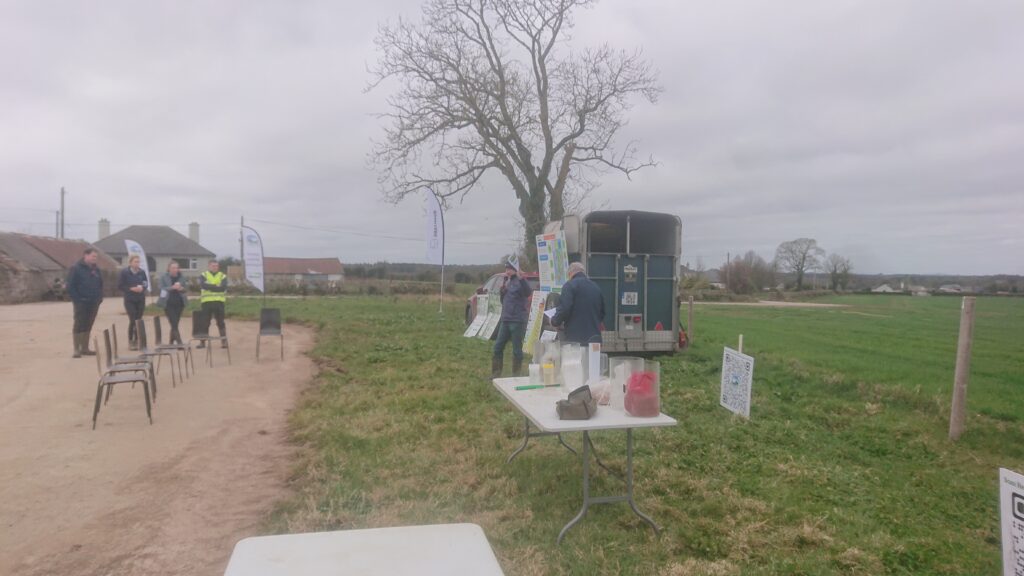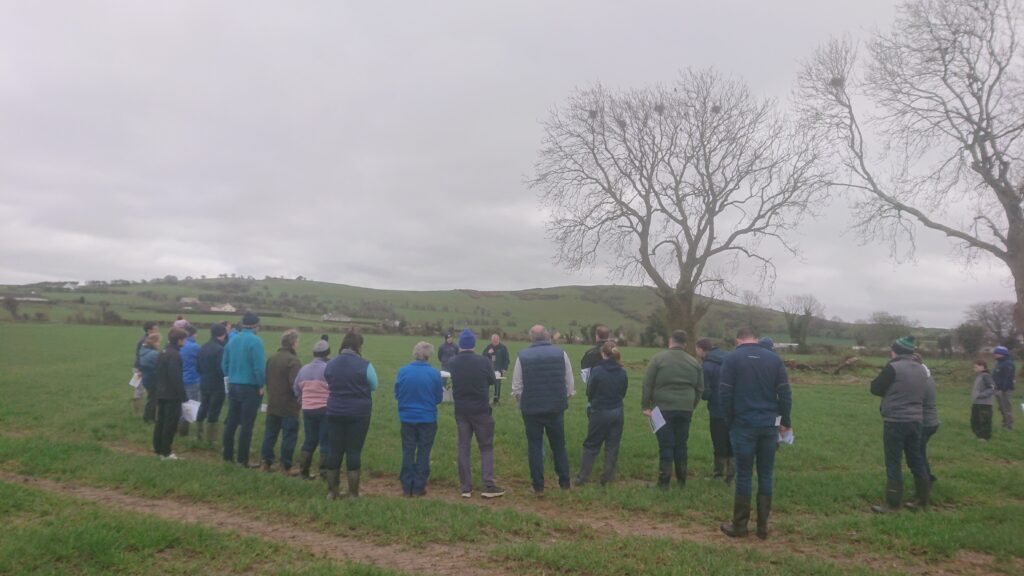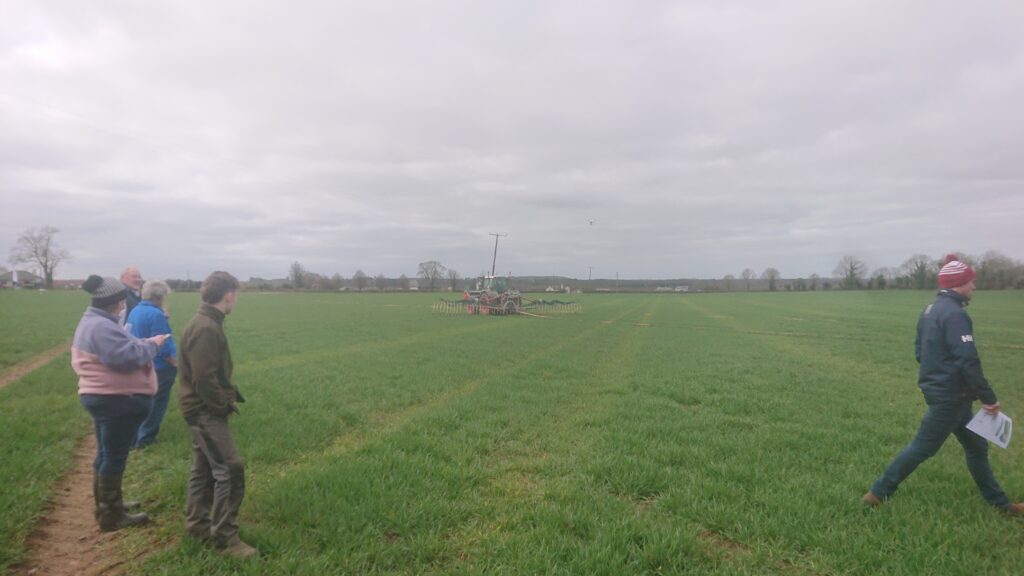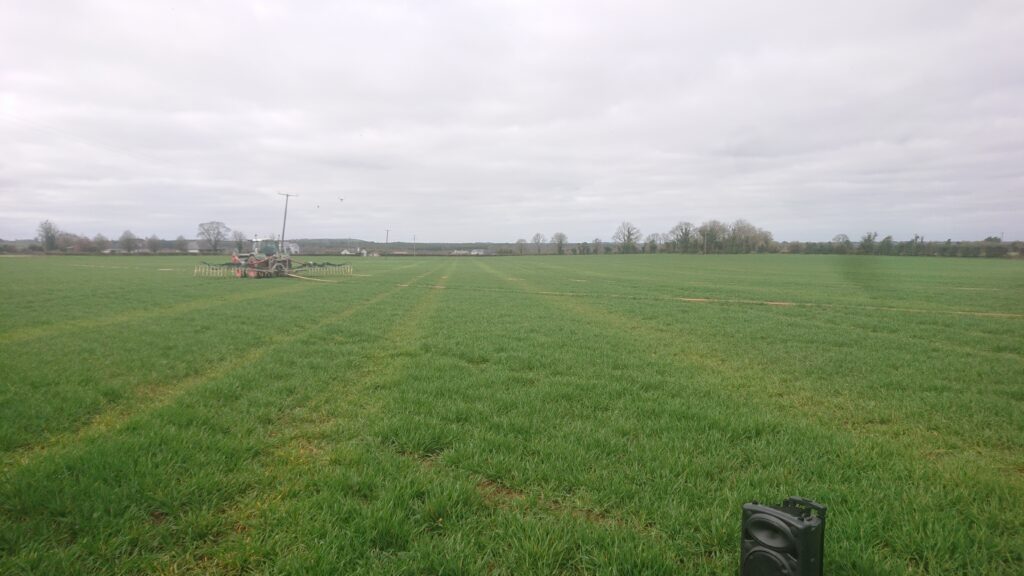TEAGASC, a NUTRI-CHECK NET partner, recently hosted a farm outing at Mattie and Miriam Moore’s farm, where the focus was on in-crop spreading of organic manures to sustainably reduce cereal production costs. The event highlighted innovative fertilization strategies, demonstrating how precision application of organic nutrients can enhance efficiency and cut transport costs.
Maximizing Nutrient Efficiency
During the outing, John Mahon, TEAGASC Environmental Advisor, discussed the advantages of separating slurry into liquid and solid fractions. This method allows for better-targeted fertilization—the solid fraction, rich in phosphorus (P) and potassium (K), can be used for base dressings in winter cereals, while the liquid fraction, containing most of the nitrogen (N), provides an efficient nutrient source. By adopting this approach, farmers can improve nutrient uptake and reduce input costs.
Enhancing Soil Health and Nutrient Assessment
Gerard McCutcheon, TEAGASC Pig Development Officer, introduced farmers to the use of a hydrometer for estimating nutrient content from dry matter content in manures and slurries. He emphasized the importance of building soil P and K indices, as well as increasing soil carbon levels, to support long-term soil fertility and sustainability. These techniques help ensure that organic manures are fully optimized for soil health and crop productivity.
Practical Demonstrations on Nutrient Recovery
The Moores demonstrated their use of pig slurry in winter wheat crops to reduce reliance on chemical fertilizers. A low-emission spreading system was showcased, designed to minimize nitrogen volatilization and enhance nutrient retention. A striking visual from the demonstration was the yellow striping in the field, which illustrated the difference between areas that received pig slurry and those that did not—clear evidence of high nitrogen recovery from organic manure.
Among the farmers attending the event were Robert Madigan and Richard Raftice from the Kilkenny CNC, who engaged in discussions on best practices for manure management and nutrient optimization.
This outing reinforced the importance of strategic organic manure application in improving crop yields, soil health, and sustainability—key objectives of TEAGASC and the NUTRI-CHECK NET initiative.







